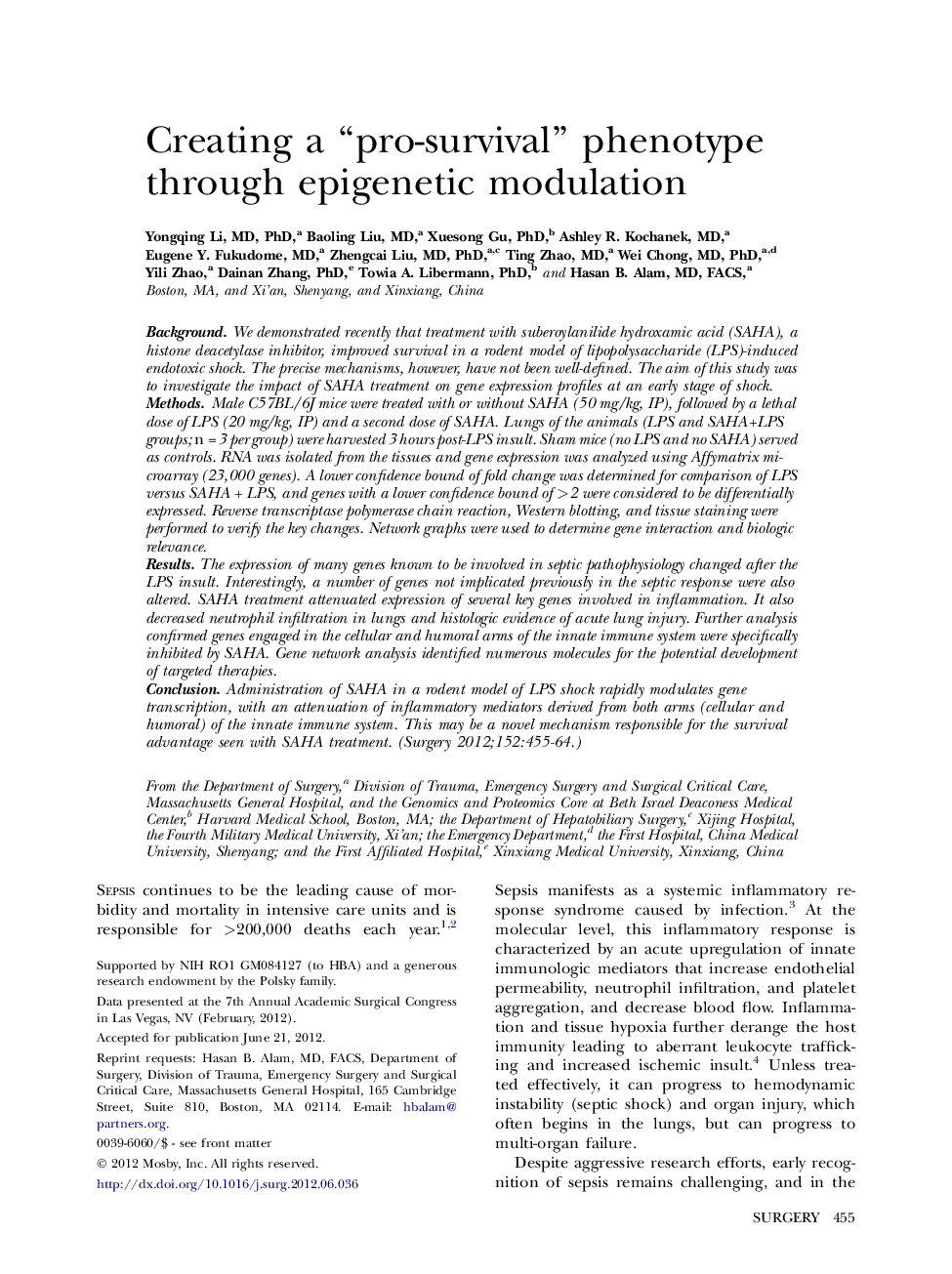| Article ID | Journal | Published Year | Pages | File Type |
|---|---|---|---|---|
| 4308367 | Surgery | 2012 | 10 Pages |
BackgroundWe demonstrated recently that treatment with suberoylanilide hydroxamic acid (SAHA), a histone deacetylase inhibitor, improved survival in a rodent model of lipopolysaccharide (LPS)-induced endotoxic shock. The precise mechanisms, however, have not been well-defined. The aim of this study was to investigate the impact of SAHA treatment on gene expression profiles at an early stage of shock.MethodsMale C57BL/6J mice were treated with or without SAHA (50 mg/kg, IP), followed by a lethal dose of LPS (20 mg/kg, IP) and a second dose of SAHA. Lungs of the animals (LPS and SAHA+LPS groups; n = 3 per group) were harvested 3 hours post-LPS insult. Sham mice (no LPS and no SAHA) served as controls. RNA was isolated from the tissues and gene expression was analyzed using Affymatrix microarray (23,000 genes). A lower confidence bound of fold change was determined for comparison of LPS versus SAHA + LPS, and genes with a lower confidence bound of >2 were considered to be differentially expressed. Reverse transcriptase polymerase chain reaction, Western blotting, and tissue staining were performed to verify the key changes. Network graphs were used to determine gene interaction and biologic relevance.ResultsThe expression of many genes known to be involved in septic pathophysiology changed after the LPS insult. Interestingly, a number of genes not implicated previously in the septic response were also altered. SAHA treatment attenuated expression of several key genes involved in inflammation. It also decreased neutrophil infiltration in lungs and histologic evidence of acute lung injury. Further analysis confirmed genes engaged in the cellular and humoral arms of the innate immune system were specifically inhibited by SAHA. Gene network analysis identified numerous molecules for the potential development of targeted therapies.ConclusionAdministration of SAHA in a rodent model of LPS shock rapidly modulates gene transcription, with an attenuation of inflammatory mediators derived from both arms (cellular and humoral) of the innate immune system. This may be a novel mechanism responsible for the survival advantage seen with SAHA treatment.
